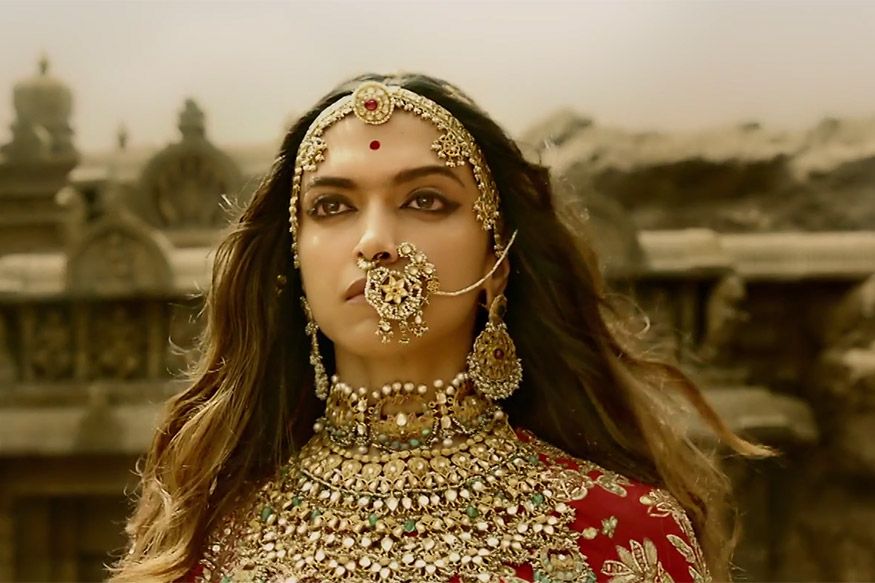It seemed futile to weigh in on the violent bellicose protest against the cinematic version of the legend of Padmaavati or Rani Padmini.
It was the same old, same old debate of freedom of expression vs people’s sentiments vs historical fact vs creative licence. All of it being manipulated towards some shadowy political end. This time they said it had to do with the Gujarat elections.
So the Karni Sena and its assorted supporters — BJP governments in Rajasthan, Madhya Pradesh, Gujarat and Haryana and the descendants of the erstwhile royal families of Rajasthan — asked for a ban on the film, staged violent protests, spewed venom in news studios, vandalised the film’s set attacking its crew and director, offered a bounty to cut off the nose of lead actor Deepika Padukone; another bounty for the director Sanjay Leela Bhansali’s head; and even had MPs call for presentations to parliamentary committees!
Most recently, they said Prasoon Joshi, the CBFC chairman, wouldn’t be allowed to attend the Jaipur Literature Festival because in clearing the film for release, the CBFC chief had failed to do his job, that is to protect law and order!
With the Supreme Court unequivocally directing states to release the film, this week the story of Padmaavat has found its way to a theatre near you. So all’s well that ends well then?
No, not really. Arson, attacks, blockades and protests are being reported in different parts of the country. In states like Gujarat, theatre owners have succumbed to the intolerable pressure and decided not to release the film. With several state governments themselves asking for a ban on Padmaavat, this genie is not going back into the bottle.
Now that I have seen the film, the real reasons for the Rajput rage seem clear. No, it’s not for the reasons that have been trotted out so far — about protecting the legendary Padmaavati’s honour — you know — How can you show a Rajput queen dancing? Why is her waist showing? Would there be a dream sequence that shows Alauddin Khilji fantasising about Padmavati? Nope, it’s none of that.
That’s just the fig leaf. The real reason the Rajput community and the BJP governments of Rajasthan, Haryana, Gujarat, Madhya Pradesh and UP have been up in arms about the film for so long is the story of Padmaavati. A story that even as it celebrates Rajput valour and honour, records the Rajput rulers’ failure when confronted by a more powerful enemy.
Substitute Rajput with Hindu and qualify enemy with Muslim and the big picture comes into focus. No, the legend of Padmavati simply doesn’t suit the narrative of our times.
Bhansali’s Padmaavat as well as other pop culture narratives of this medieval tale draw from the ballad of the 15th Century Sufi poet Malik Mohammad Jayasi.
Look up Amar Chitra Katha or Shyam Bengal’s Bharat Ek Khoj that was broadcast on Doordarshan in the ‘80s, and you will find the attribution.
There are differences in the creative interpretations and the dramatic licences taken, but the three narratives hinge on the same plot points.
There was a beautiful Sinhalese princess who was married to the Rajput king Ratansen of Chittor. Tales of her legendary beauty were carried to the powerful Sultan of Delhi, the Afghan Alauddin Khilji by a disgruntled courtier seeking revenge against the Rajput king. Alauddin Khilji had no compunction in going to war and using trickery and lies to possess the beautiful queen.
All three narratives of this 14th century tale articulate the fact that Khilji had greater firepower, was more cunning, and won the battle even if he didn’t get Padmaavati. While the Rajputs were defeated and wiped out in Chittor, the fact that Khilji wasn’t able to get to Padmavati has been celebrated as a moral victory of good over evil.
So if all the narratives tell the same story, why is there such rabid rejection of Bhansali’s Padmaavat? Two reasons. First, the timing. In 2018 there is no place for a story that details defeat to a Muslim invader, even if it was an honourable defeat.
Second, it’s the medium. When a Hindi movie tells the same story it amplifies and mainstreams it like nothing else does. And if the filmmaker is a skilled one — and there’s little doubt of Bhansali’s mastery of his craft and art — you can imagine how potent that story becomes.



























![List Of Profession Eligible For Family Visa In #Qatar2022 [Salary Occupations]](https://welcomeqatar.com/wp-content/uploads/2022/07/maxresdefault-1-324x400.jpg)



